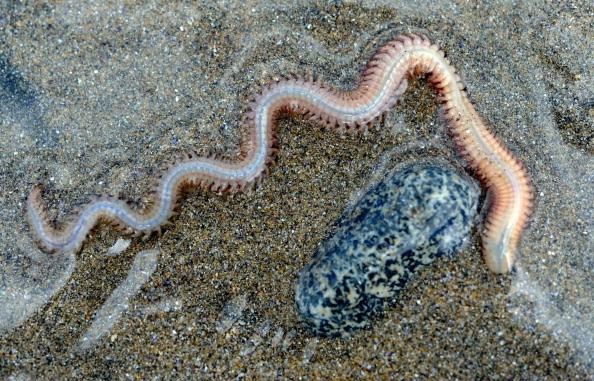A species of roundworm which most scientists use in biological research has the ability to sense and respond to sound, even though they don't have ear-like organs, as per a new study from the University of Michigan Life Sciences Institute.

Sense of Proprioception
Scheduled to publish on the 22nd of September in the journal Neuron, the findings provide a new biological tool used for studying the genetic mechanisms on which the sense of hearing is based.
For over 15 years in the laboratory of Shawn Xu at the Life Sciences Institute, researchers have been making use of Caenorhabditis elegans to study sensory biology. When his laboratory started this work, these worms that are millimeter-long were believed to possess just three major senses including smell, touch, and taste.
Xu's laboratory has since accepted that worms can sense light, even though they don't have eyes, and also the ability to sense their body posture themselves during movement which is referred to as the sense of proprioception.
Worms' Response to Airborne Sound Waves
LSI research professor and also the senior author of the study whose name is Xu said: "There was just one more primary sense missing-auditory sensation, or hearing," said "But hearing is unlike other senses, which are found widely across other animal phyla. It's really only been discovered in vertebrates and some arthropods. And the vast majority of invertebrate species are thus believed to be sound insensitive."
However, the scientists found out that in the range of 100 hertz to 5 kilohertz, worms responded to airborne sounds. This range is broader than the ones some vertebrates can sense.
Anytime a tone within that range was played, worms could be seen quickly moving away from where the sound is coming from, showing that they do not just hear the tone but also sense its source.
The researchers carried out a number of experiments to make sure their response is to airborne sound waves, and not vibrations on the surface they were kept on. Instead of feeling the vibrations through the sense of touch, Xu is convinced the way the worms sense these tones is by acting as a kind of whole-body cochlea which is the spiraled, fluid-filled cavity in vertebrates' the inner ear.

Auditory Sensory Neurons
The worms possess two kinds of auditory sensory neurons that are connected to the skin of the worms in a tight manner. Anytime sound waves bump into the skin of the worms, they cause the skin to vibrate, which in turn may make the worm's fluid vibrate in the same manner the fluid in a cochlea vibrates.
These vibrations make the auditory neurons bound to the skin of the worms active, the next thing that occurs is the translation of the vibrations into nerve impulses.
And since the two neuron types are assigned in distinct parts of the worm's body, the worm can be able to detect where the sound is coming from based on the activated neurons. This sense may help worms to detect and elude their predators as many of their predators produce audible sounds when hunting.
Related Article : Researchers' Understanding of Color 'Upended' by an Eyeless Worm
For more news, updates about worms and similar topics don't forget to follow Nature World News!
© 2025 NatureWorldNews.com All rights reserved. Do not reproduce without permission.





